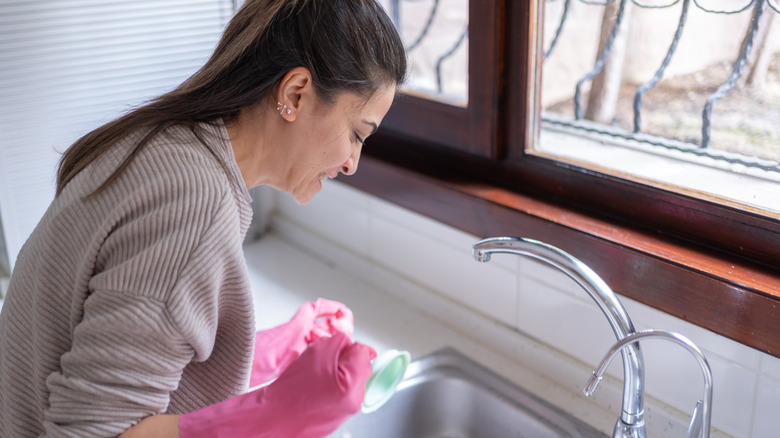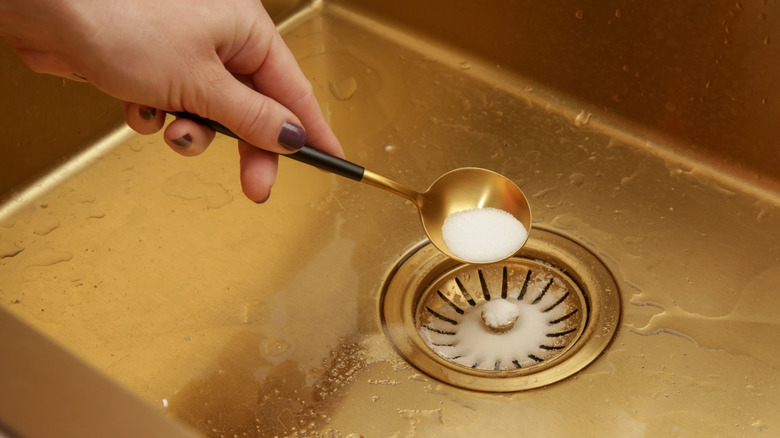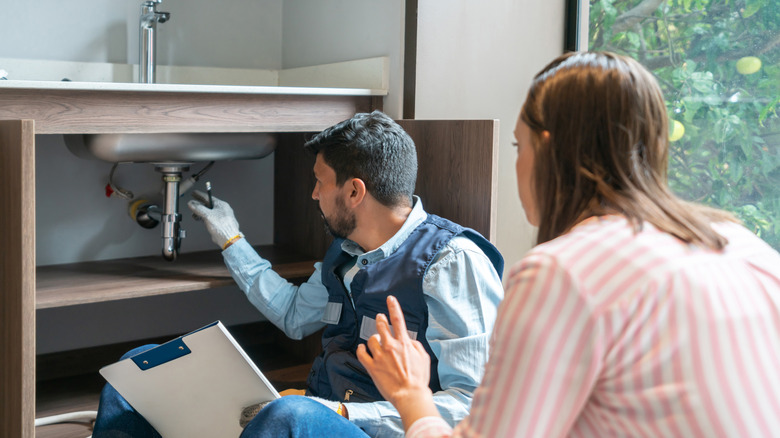How To Unclog Your Kitchen Sink (Without Calling A Plumber)
It often starts with a slow drain. Then your kitchen sink takes longer to clear, until one day there's standing water and a strange smell you can't ignore. You run the garbage disposal, but nothing changes. Do you really need a plumber? Not necessarily. In most cases, you can unclog your kitchen sink in a pinch with easy hacks, using nothing more than your hands, hot water, and a few things from your pantry.
Unclogging a sink doesn't have to involve fancy gadgets or harsh chemicals. In fact, one of the easiest solutions might be as basic as pulling out the blockage by hand, especially if it's near the surface. For example, in the bathroom, you might be able to grab a clump of hair that's blocking the drain and pull it out. It's not the cleanest job, but it often works. And if the clog's further down, a mix of boiling water, a little pressure, and a vinegar-and-baking-soda reaction can usually break things up. What matters is knowing where to start, what to try, and when it's time to stop and call for help.
Easy ways to fix your kitchen sink blockage
Most sink clogs come down to a mix of the usual suspects: grease, soap residue, and food debris building up over time. Draining oils and fats into the sink makes it worse. Clogs seem sudden, but your sink has likely been slowing for weeks. Once you've checked for any visible debris and cleared the drain opening, the next step is to try natural methods before reaching for anything abrasive or chemical. A time-tested approach is the baking soda and vinegar trick.
Pour about 2 teaspoons of baking soda into the drain, followed immediately by half a cup of vinegar. Let it fizz and settle for 10 to 15 minutes, then flush with hot water. The chemical reaction can loosen light blockages and clear the pipe walls enough for water to start flowing again. If it's a more stubborn case, you can unclog your drain with some unexpected household items. A plunger can be surprisingly effective here, but you'll want a sink plunger, not a toilet plunger. A sink plunger has a flat bottom on its cup while a toilet plunger has a flange inside. Just make sure the sink has enough water to create suction, and seal the overflow hole if your sink has one. When done patiently, these methods often clear clogs without a drain snake or a plumber.
When to escalate and how to avoid future clogs
There's a point where DIY solutions stop being helpful and start risking more trouble than they're worth. If your kitchen drain remains fully backed up after trying these tips for unclogging the sink, the clog might be deeper in the system, especially if you hear gurgling noises or notice backup in other drains. At that point, it's best to stop and call a plumber. Forcing the issue with makeshift tools or harsh chemicals may damage your pipes or push the blockage even farther down the line. That said, most kitchen sink clogs are minor and fixable if caught early. The trick is not letting it build up in the first place.
To prevent future clogs, small habits go a long way. Don't pour grease or cooking oil into the drain. Instead, store it in a container and dispose of it in the trash. It also helps to place a mesh strainer over the drain to catch food particles, and make sure to scrape off plates before rinsing them. Even with a disposal, it's just a helper, not a catch-all. Flush the drain occasionally with hot water and vinegar or soap to prevent buildup. A little upkeep helps your sink stay clear and plumber-free.


